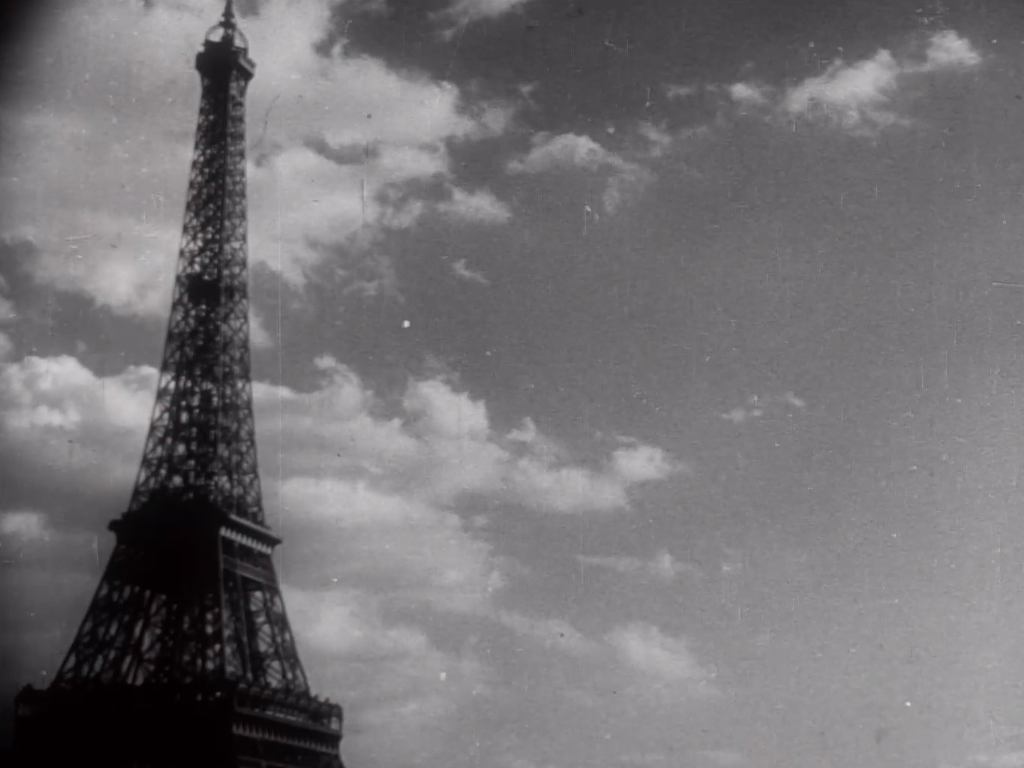
Forty years after its construction, René Clair composes a visual poem about Paris’ most striking and famous landmark: the Eiffel Tower.
« La grande fille de fer dont j’ai toujours été amoureux. »
René Clair
“Maupassant often lunched at the restaurant in the tower, though he didn’t care much for the food: It’s the only place in Paris, he used to say, where I don’t have to see it. And it’s true that you must take endless precautions, in Paris, not to see the Eiffel Tower; whatever the season, through mist and cloud, on overcast days or in sunshine, in rain-wherever you are, whatever the landscape of roofs, domes, or branches separating you from it, the Tower is there; incorporated into daily life until you can no longer grant it any specific attribute, determined merely to persist, like a rock or the river, it is as literal as a phenomenon of nature whose meaning can be questioned to infinity but whose existence is incontestable. There is virtually no Parisian glance it fails to touch at some time of day; at the moment I begin writing these lines about it, the Tower is there, in front of me, framed by my window; and at the very moment the January night blurs it, apparently trying to make it invisible, to deny its presence, two little lights come on, winking gently as they revolve at its very tip: all this night, too, it will be there, connecting me above Paris to each of my friends that I know are seeing it: with it we all comprise a shifting figure of which it is the steady center: the Tower is friendly.”
Roland Barthes1
« René Clair aime la Tour Eiffel. Il lui consacre un petit documentaire. Que dis-je? Un documentaire…un poème plutôt, un poème en filigrane de fer. Bande de court métrage, mais qui retentira profondément dans les cœurs de nos contemporains, ceux du moins, qui goûtent leur temps. Pour moi, je donnerais volontiers Ben Hur avec ses chars, ses trirèmes et ses centurions et, par-dessus le marché, quelques superfilms de haut calibre, pour les vingt minutes que dure ce documentaire-là. Une architecture métallique arachnéenne, des croisillons, des entretoises boulonnées, un ascenseur, le sentiment de se perdre dans une dentelle cent mille fois grossie et devenue géométrique, le ciel de Paris, le fleuve et le sol de Paris, des nuages, l’œil de René Clair et sa patience, son amour d’ouvrier. Que faut-il de plus pour écrire sur la pellicule, une œuvre auprès de quoi tant de grandiose facile et de pathétique ampoulé se replacent à leur médiocre échelle. Il faut voir La Tour c’est une grande leçon d’humilité, de conscience, de poésie. »
Alexandre Arnoux2

